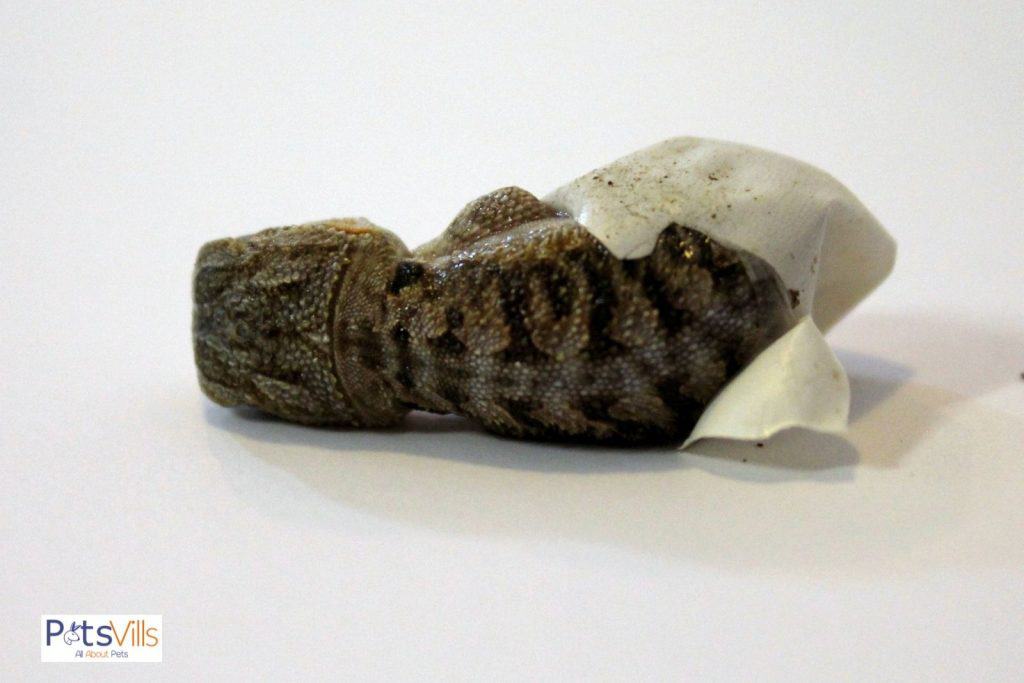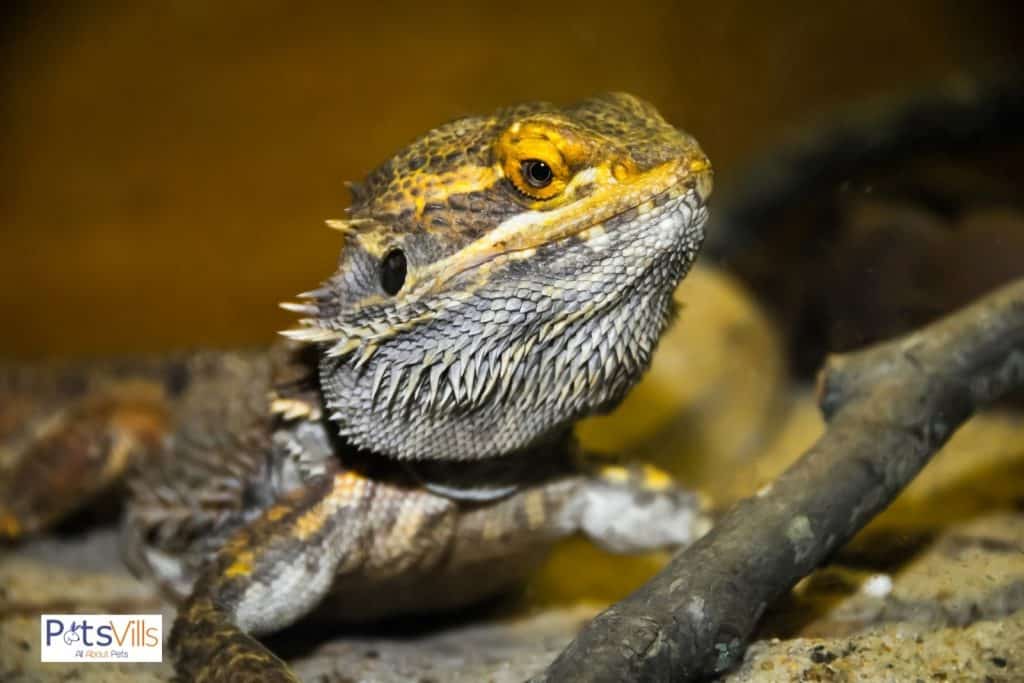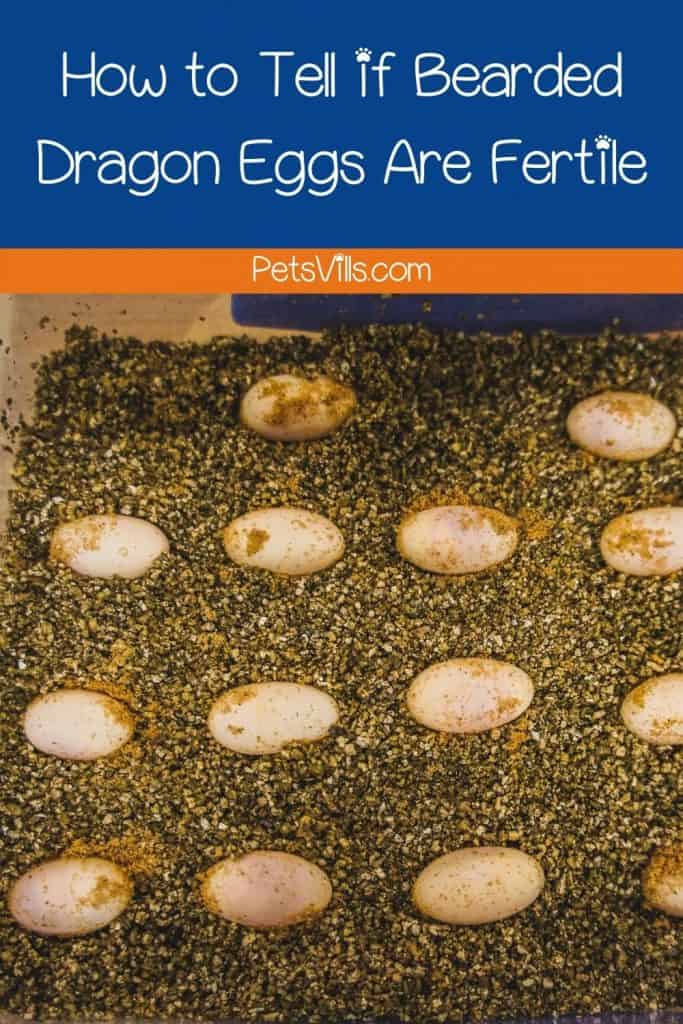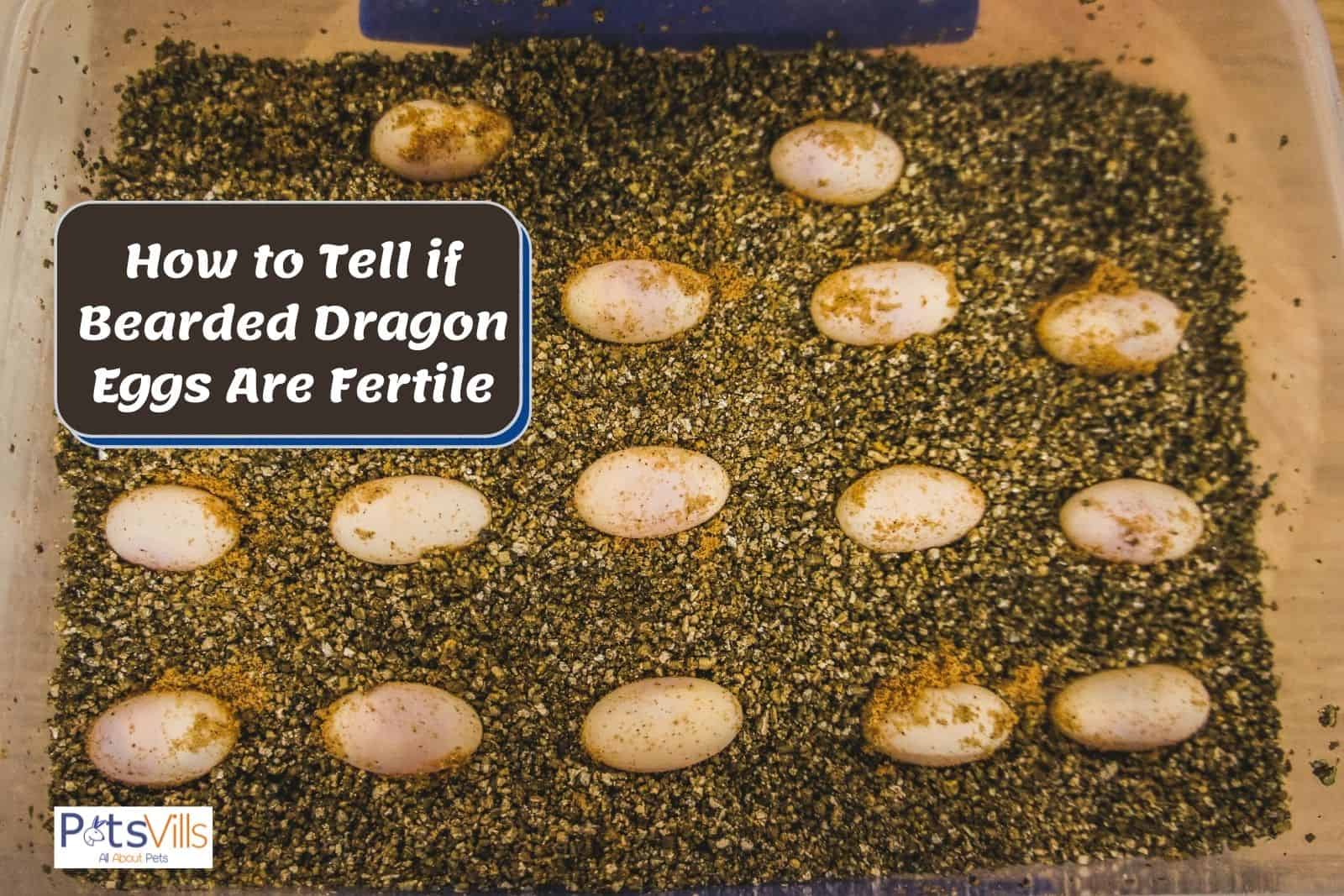Being able to check if a bearded dragon’s eggs are fertile saves you time and increases your chances of ending up with some little beardies to raise.
Creating a new life is one of the best experiences for a pet parent, but not all eggs a beardie lays are fertile.
In this article, I’ll show you how to tell which beardie eggs are fertile, which eggs aren’t, and also how to handle them.
Table of Contents
How to Tell Whether Bearded Dragon Eggs Are Fertile By Candling
Recognizing which eggs are fertile is straightforward. All you need is a dark room, a light, and eggs.
Also known as candling, this process allows you to check for embryos by projecting a bright light through the eggs [1].
If the eggs are fertile, you’ll see a small pink embryo with veins spreading out, and the light reflected out of the egg will be pink.
If the egg is not fertile, you won’t see anything, and the light reflecting from it will be yellowish.
At this stage, the eggs are pretty delicate, so turning them around often could detach the placenta and kill the baby dragons.
To avoid this, mark the eggs with a pencil, so you’ll know which side they were on before you picked them.
It’s also best to wait at least a week or two to start checking the eggs to prevent any potential damage.
Take a look at this video:
What to Do With Infertile Bearded Dragon Eggs?
The best way to handle infertile female dragon eggs is to discard them. Like most reptiles or birds, female beardies will lay eggs regardless of whether there’s a male or not [2].
As a result, infertile eggs are very common. It would not be surprising to find the majority of the eggs infertile even when there’s a male around.
However, it’s also important to note that the veins and embryo may take some time to develop.
So, give the eggs that don’t seem to have the veins up to 2 weeks to see if an embryo will develop. If they don’t, then you’ll have to discard them.
Or, you can also wait for 90 days, and if the eggs don’t hatch within that time, they are of no use to you or your beardie.
Over time, infertile or dead eggs get moldy and develop cracks, so you won’t want to have them around.
How to Tell if a Female Beardie is Nesting
Nesting beardies appear lazy. You’ll realize that instead of their usual hyperactivity, they now prefer to spend most of their time lying close to the heat lamp.
Also, since they have a clutch of eggs in them, female dragons will appear larger than usual. When you feel the stomach, you’ll feel stone-like or pebble-like structures.
Another sign that your female dragons are nesting is after hatching time they’ll start digging in the soil while looking for better places to hide their eggs.
Timing is also important since you should know or be able to estimate when the dragons will lay eggs.
This brings us to the question:
How Long Are Bearded Dragons Pregnant for?
So, how long are bearded dragons pregnant?
Beardies stay pregnant for 4 to 6 weeks [3] after mating. However, likely, you won’t know when they’ve mated, and sometimes they’ll be pregnant with infertile eggs.
In such cases, the only way to see if they’ll lay eggs is to look out for the signs mentioned earlier.
Once you’re sure your female dragons want to lay eggs, it’s time to prepare a place for them to do so.
How to Prepare a Nesting Box for Your Reptile
If you don’t find a suitable place for them to lay their eggs, they’ll try to look for somewhere by themselves and won’t lay the eggs until they find the right place.
As a result, they can become egg-bound, leading to severe issues such as lethargy, depression, urogenital tracts discharge, and tissue protrusions on the cloaca [4].
So, what does a suitable nesting box look like? I use an 8-10 gallon container that can hold a single clutch of up to 20 eggs for my dragons.
The first step you should take is finding a plastic container with a secure lid. Next, fill this egg container with moist or damp sandy soil, vermiculite, or reptile dirt.
Beardies need to dig tunnels or small spaces to hide their eggs, and these beddings make it easier for them to dig.
Additionally, vermiculite has become the preference for most bearded dragon owners due to its resistance to mold.
Bearded dragons will start laying when they feel that their bedding is warm. And since the eggs are sensitive to sudden temperature changes, you should make sure to maintain the temperature.
This is a great video tutorial:
How Long Does it Take Bearded Dragon Eggs to Hatch?

With proper incubation, it can take between 55 and 75 days for the eggs to hatch. But this can extend to 90 days if the temperatures are very low.
The ideal conditions for incubating bearded dragon eggs are 80 to 85 degrees F and 75% of humidity [5].
If towards the hatching day, you’ll notice the eggs getting wrinkly and collapsing, and there’s no need to worry. That’s how bearded dragon eggs are when they’re about to hatch.
Another thing you may notice after they hatch is a pink substance on the baby dragon’s belly.
You don’t have to do anything about this either as it will disappear after a few days.
What to Do During the Incubation Time
Don’t just leave the eggs and wait to see the little beardies after a few days. You should constantly be monitoring them while keeping the conditions in the vivarium optimal for the eggs.
As already mentioned, the temperatures should be within the 80 to 85 degrees F range, while the humidity should be at least 75%.
You can make the beddings more humid by sprinkling some water. It also helps to keep a thermometer and hygrometer close by to help check the conditions in the tank.
But you can also avoid all this trouble by choosing from some of the best incubators for bearded dragon eggs.
After maintaining the proper conditions, you should see the little beardies appear from the eggs after 55 to 90 days.
They emerge head first and struggle a bit as they gain strength from the remaining part of the yolk. However, you’ll see them moving around within a few hours, or sometimes a few days.
What to Do With An Egg-Bound Bearded Dragon
Below are some of the causes of egg binding.
- Poor living conditions (too hot, too cold, very low or very high humidity)
- Lack of a suitable place to lay the eggs
- Calcium deficiency – pregnancy leads to a loss of calcium in their bodies, causing egg-binding, or worse, Metabolic Bone Disease.
- The eggs may be too large
- The eggs may be irregularly shaped
- Illnesses
- Injuries
Below is how you can deal with egg binding.
- Ensure proper temperature and humidity levels in the bearded dragon tank.
- Offer plenty of food and extra calcium.
- Create room for physical activity and encourage exercise.
- Build a proper depositing or laying site
- Consider hormone shots to help the bearded dragons lay eggs.
- In some cases, surgical intervention may be necessary.
Below is a helpful video to watch:
How to Take Care of the Female Bearded Dragon After Laying Eggs
Seeing the dragons lay their eggs can be very satisfying for a pet owner.

For the female beardie, it’s exhaustive. As soon as they have laid their eggs, take the following steps to make sure they regain their strength;
- Rehydrate them – Make sure the female beardie gets enough clean water to drink.
- Bath them – It would also help if you gave them a quick bath to eliminate any dirt or mess that resulted from the laying process.
- Give them enough nutritious food.
- Clean the vivarium and the area where they just laid their eggs so they can rest in a clean place.
FAQs
What Does a Fertilized Bearded Dragon Egg Look Like?
Fertilized eggs appear larger and whitish or pinkish. If you project light through them, you’ll see an embryo and veins running from it. The light reflected will also be pink.
Can Infertile Bearded Dragon Eggs Hatch?
No, eggs need to be fertilized to hatch. You can identify an infertile egg by using light. If you see nothing but a yellowish reflection, the egg is infertile, and you should discard them.
Can Bearded Dragons Eat Their Own Eggs?

Yes, they can. This is pretty common amongst reptiles and some birds. To prevent this, always dispose of the infertile eggs as soon as possible.
What Do I Do If My Bearded Dragon Has Infertile Eggs?
If your bearded dragon lays infertile eggs, throw them out since they can’t hatch.
How Many Eggs Do Bearded Dragons Lay?
Bearded dragons lay eggs in clutches, with one clutch having 20 30 eggs. They can lay 4 to 5 clutches in a mating season.
Conclusion
You can easily check if eggs are fertile through candling, and it only takes a few seconds.
This article covers how to know when a bearded dragon is about to lay eggs when she’s nesting and how to take care of your pet post-laying eggs.
References
- 1. Candling Eggs – Incubation and Embryology – University of Illinois Extension [Internet]. Illinois.edu. 2021 [cited 2021 Dec 10]. Available from: https://web.extension.illinois.edu/eggs/res26-candling.html
- 2. Bearded Dragons Eggs: What Do You Need To Know? [Internet]. Vet Explains Pets. 2020 [cited 2021 Dec 10]. Available from: https://vetexplainspets.com/bearded-dragons-eggs/#:~:text=Like%20many%20birds%20and%20reptiles,that%20lays%20infertile%20eggs%20regularly.
- 3. https://www.facebook.com/thespruceofficial. What to Do if Your Bearded Dragon Lays Eggs [Internet]. The Spruce Pets. 2018 [cited 2021 Dec 10]. Available from: https://www.thesprucepets.com/bearded-dragon-eggs-4171698
- 4. Reptiles: Dystocia [Internet]. vca_corporate. 2021 [cited 2021 Dec 10]. Available from: https://vcahospitals.com/know-your-pet/reptiles—dystocia
- 5. Doneley B, Health A, Toowoomba W. EXOTICS -REPTILES AND AMPHIBIANS _________________________________________________________________________________ 1607 CARING FOR THE BEARDED DRAGON [Internet]. Available from: https://www.cabi.org/ISC/FullTextPDF/2006/20063121821.pdf

Do you have more tips on how to tell if bearded dragon eggs are fertile? Please let us know in the comments below!
Barry Stingmore is a British content writer living in Fuerteventura, Spain. An animal lover at heart, he shares his home with a dog and four rescue cats and has a passion for writing about animals big and small.
Barry loves finding answers to your animal-related questions, the more research involved the better! You can rely on him to find the facts.
Find him on FACEBOOK, TWITTER AND Linkedin
Read his latest ARTICLES.
Find more about him HERE.


